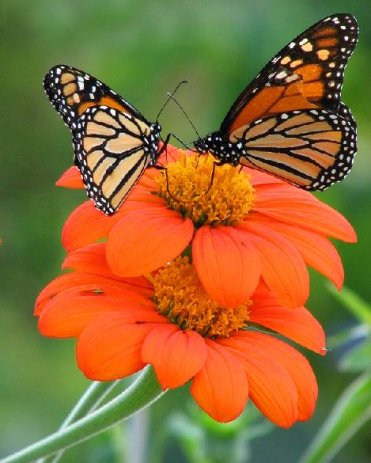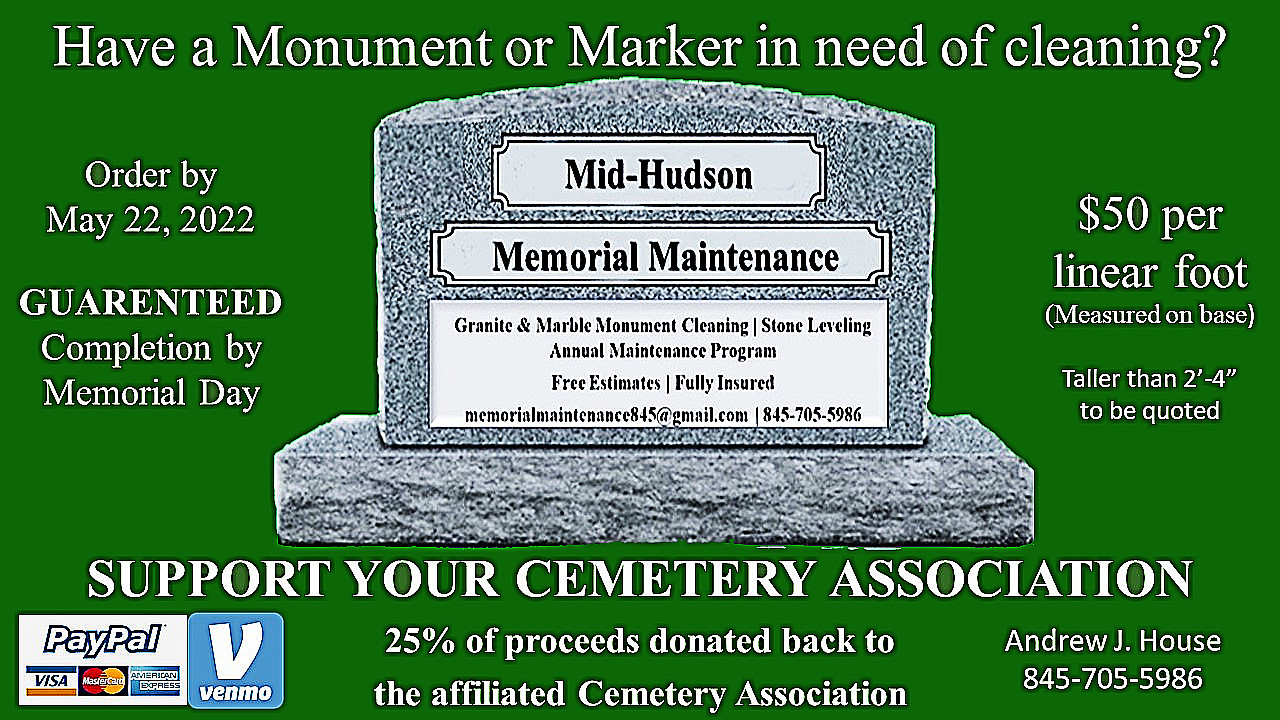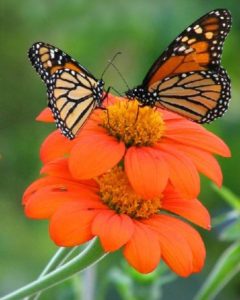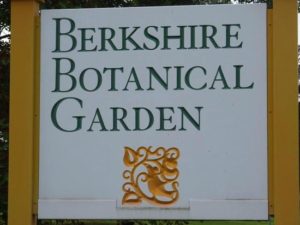National Pollinator Week
Mexican sunflowers provide a food source for pollinators in the native garden.
June 19th through 25th is National Pollinator Week. This is a time to reflect on the importance of pollinating insects, birds and bats to our farms and gardens, and to learn about what you can do to reverse the decline of their populations. There are plenty of easily accessible sources of guidance; in particular, The Pollinator Partnership, a founder of National Pollinator Week, maintains a very informative website (http://www.pollinator.org) with free, regionally adapted, planting guides.
Making your garden more pollinator friendly is a fairly straightforward process. Emphasize native plants in your landscaping – they provide more benefit to the native insects that are the backbone of the pollination process in the northeast. If you include non-native plants, try to avoid those with heavily ”improved,” double flowers, as these provide little benefits to pollinators.
Mix it up: plant flowers with a range of colors and blooming seasons to benefit the widest range of pollinators. Ideally, you should have pollinator-friendly plants in bloom in your landscape from spring through fall to provide a continuous food supply. Arrange plants in groups of a single type to make them easier for pollinators to target. Try to stay away from insecticides, especially the systemic pesticides such as neonicotinoids that are absorbed by the plant and poison all parts of it including nectar and pollen. And resist the urge to manicure all parts of your yard. Native bees nest in bare ground and dead wood, and leaf litter provides cover for pollinating insects. Finally, provide a bird bath or some other water source.
At Berkshire Botanical Garden in Stockbridge, MA, the children’s garden has been redesigned this year to serve as a teaching tool for visitors to observe and learn about ecosystems that benefit pollinators like bees, butterflies, moths, hummingbirds and wasps. Plantings there include silky morning glory, black-eyed Susan, lyreleaf sage, Argentine verbena, and Mexican sunflower, and added elements include saucers and small puddles as water sources in addition to hummingbird feeders and bee condos to invite pollinators into the space.
If you are feeling ambitious, you might take Peggy McLeod as your model. She is showing what a private citizen with energy and imagination can accomplish.
It started, she says, on a vacation trip to Asheville, North Carolina, last year when Peggy and a friend came upon a wildflower garden with signage identifying Asheville as a supporter of Bee City, USA (http://www.beecityusa.org/) a program in which municipalities are encouraged to adopt a resolution that fosters sustainable habitat for pollinators within their boundaries. Upon returning home to western Massachusetts, McLeod began planning, with Amy Pulley (who maintains a nursery for pollinator-friendly plants in Cummington, Massachusetts) a similar program better adapted to their rural setting. An initial meeting was encouraging: despite a cold, rainy, late November night, 18 passionate activists turned up at her home to discuss ways and means. They founded Western New England Pollinator Networks, which now boasts a membership of 125.
The aspirations of this group are wide-ranging. The fundamental goal is “enlarging, regenerating and revitalizing pollinator friendly habitats in western Massachusetts.” To accomplish this, the group is reaching out to all sorts of potential collaborators, including small land stewards and home gardeners, land-use planners, landscaping professionals; garden clubs, plant nurseries, and local academic institutions such as Smith College and the University of Massachusetts. The group is also moving ahead with a project to design and expand existing way-stations for migrating Monarch butterflies, and a program of public workshops. The latter will focus on such subjects as pollinator garden principles, identifying sources of plants and seeds for pollinator gardens, the inclusion of beneficial bugs in edible landscapes, bee identification, no spray methods to care for and manage pollinator areas, and converting lawn areas into meadows using native species.
The group has already been involved in persuading residents of three Massachusetts communities (Williamstown, Cummington, and Plainfield) to bring resolutions to their annual town meetings calling for the adoption by the town of such pollinator friendly practices for publicly owned properties, while also promoting pollinator habitat expansion on private properties.
“There are so many opportunities,” says McLeod, “to build pollinator habitat, such as along roadsides, bicycle paths, library lawns, a portion of town hall lawns, strips along community gardensand among individual plots, [and] condo association landscaping.” And in many cases, the changes involve doing less, not more. Less spraying of insecticides, of course, but also things as simple as mowing lawns less often to allow clover and other flowering plants to bloom and provide pollinators with nectar and pollen. For more information, contact Peggy McLeod at sunraven99@gmail.com, or visit the groups Facebook page at https://www.facebook.com/groups/wmassPoll/
Thomas Christopher is the co-author of “Garden Revolution” (Timber Press, 2016) and is a volunteer at Berkshire Botanical Garden. berkshirebotanical.org
Be-a-Better-Gardener is a community service of Berkshire Botanical Garden, one of the nation’s oldest botanical gardens in Stockbridge, MA. Its mission to provide knowledge of gardening and the environment through 25 display gardens and a diverse range of classes informs and inspires thousands of students and visitors on horticultural topics every year. Thomas Christopher is the co-author of Garden Revolution (Timber press, 2016) and is a volunteer at Berkshire Botanical Garden. berkshirebotanical.org.




